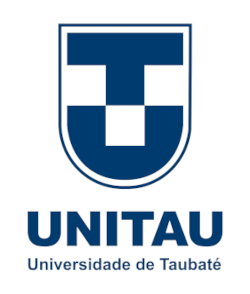HUMANITARIAN SUPPLY CHAIN RISK MANAGEMENT (HSCRM)
Palavras-chave:
Disaster, Humanitarian, Risk, Supply ChainResumo
Natural disasters or complex emergencies affect millions of people every year and cause losses such as the damage to buildings, infrastructure and natural resources. Because of this, humanitarian organizations acting increasingly pro-actively to be efficient and effective in responding to emergencies worldwide. The management of the supply chain has been used to help in taking preventive action, creating an integrated logistics structure which reduced the response time. This paper proposes a framework with a new stage in the disaster management cycle, making risk management proactively planning and execution and control of the process organizations to act effectively with catastrophic events.
Referências
Abidi,H.,de Leeuw,S.,&Klumpp,M.(2014). Humanitarian supply chain performance management: a systematic literature
review. Supply Chain Management: An International Journal, 19(5/6),592-608.
Chopra S and Sodhi MS (2004), Managing risk to avoid supply-chain breakdown. MIT Sloan Mngt Rev 46(1): 53-61.
da Costa, S. R. A., Bandeira, R. A. M., Mello, L. C. B. B., & Campos, V. B. G. (2014). Humanitarian supply chain: an analysis
of response operations to natural disasters. EJTIR, 14(3), 290-310.
Ergun,O.,Karakus,G.,Keskinocak,P.,Swann, J.,&Villarreal,M.(2009).Humanitarian Supply Chain Management-An
Overview. In Models and Algorithms for Optimization in Logistics Dagstuhl Seminar Proceedings (Vol.10).
Ertem, M. A., Buyurgan, N., & Rossetti, M. D. (2010). Multiple-buyer procurement auctions framework for humanitarian
supply chain management.International Journal of Physical Distribution & Logistics Management, 40(3), 202-227.
Finch,P.(2004). Supply chain risk management. Supply Chain Management: An International Journal,9(2),183-196.
Gatignon, A., Van Wassenhove, L. N., & Charles, A. (2010). The Yogyakarta earthquake: Humanitarianrelief through IFRC’s
decentralized supply chain.International Journal of Production Economics, 126(1), 102-110.
Howden, M.(2009,May).How humanitarian logistics information systems can improve humanitarian supply chains: a
view from the field. In Proceedings of the 6th International ISCRAM Conference, Gothenburg, Sweden.
Hallikas, J., & Virolainen, V. M. (2004). Risk management in supplier relationships and networks. Supply Chain Risk, 43-65.
Howden, M. (2009, May). How humanitarian logistics information systems can improve humanitarian supply chains: a
view from the field. InProceedings of the 6th International ISCRAM Conference, Gothenburg, Sweden.
Kabra,G.,& Ramesh, A.(2015).Analyzing drivers and barriers of coordination in humanitarian supply chain management
under fuzzy environment. Benchmarking: An International Journal, 22(4),559-587.
Oloruntoba, R., & Gray, R. (2006). Humanitarian aid: an agile supply chain? Supply Chain Management:an international
journal, 11(2), 115-120.
March, J. G., & Shapira, Z. (1987). Managerial perspectives on risk and risk taking. Management science, 33(11), 1404-1418.
Paulsson, U. (2004). Supply chain risk management. Supply chain risk: A reader, 79-96.
Pateman, H.,Hughes,K,&Cahoon,S.(2013).Humanizing humanitarian supply chains: a synthesis of key challenges. The
Asian Journal of Shipping and Logistics,29(1),81-102.
Peck,H.(2005).Drivers of supply chain vulnerability:an integrated framework. International journal of physical distribution
& logistics management,35(4),210-232.
Ritchie,B.,&Brindley,C.(2007).An emergent framework for supply chain risk management and performance measurement.
Journal of the Operational Research Society,58(11),1398-1411.
Santarelli, G., Abidi, H., Klumpp, M., & Regattieri, A. (2015). Humanitarian supply chains and performance measurement
schemes in practice.International Journal of Productivity and Performance Management, 64(6), 784-810.
UNISDR(2007),“Terminology” The United Nations Office for Disaster Risk Reduction, http://www.unisdr.org//we/inform/
terminology,jun/2012.
Downloads
Publicado
Edição
Seção
Licença

Este trabalho está licenciado sob uma licença Creative Commons Attribution-NonCommercial-NoDerivatives 4.0 International License.
A submissão de originais para este periódico implica na transferência, pelos autores, dos direitos de publicação impressa e digital. Os direitos autorais para os artigos publicados são do autor, com direitos do periódico sobre a primeira publicação. Os autores somente poderão utilizar os mesmos resultados em outras publicações indicando claramente este periódico como o meio da publicação original.




